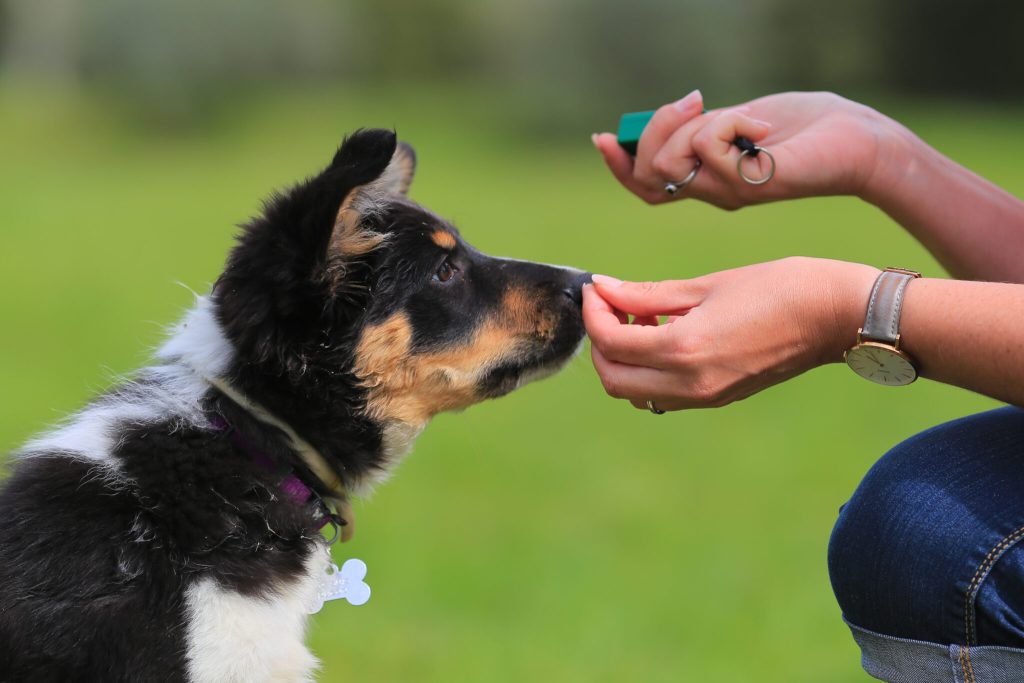Pets are often considered part of the family, providing companionship, comfort, and entertainment to their owners. However, as any pet owner knows, pets can sometimes exhibit behaviors that are less than desirable. Whether it’s a dog incessantly barking, a cat scratching furniture, or a bird becoming aggressive, behavioral issues can be frustrating and challenging to handle. Understanding the causes of these behaviors and how to address them is essential to maintaining a harmonious relationship with your pet.
In this comprehensive guide, we will explore the most common behavioral problems in pets, practical solutions to correct these behaviors, and expert advice on improving communication with your pet to foster a positive, well-behaved companion.
Common Behavioral Problems in Pets
1. Excessive Barking in Dogs
Excessive barking is one of the most common behavioral issues in dogs. While barking is a natural way for dogs to communicate, constant barking can become a nuisance. Dogs may bark excessively due to anxiety, boredom, or territorial behavior.
Causes:
- Anxiety: Dogs may bark excessively when left alone, a condition known as separation anxiety.
- Boredom: Lack of physical and mental stimulation can lead to boredom, causing a dog to bark for attention.
- Territorial Behavior: Dogs may bark excessively to protect their territory from perceived threats, such as strangers or other animals.
2. Destructive Chewing
Destructive chewing is a common issue in puppies, but it can continue into adulthood if not addressed. Dogs chew for a variety of reasons, from teething in puppies to stress and boredom in adult dogs.
Causes:
- Teething: Puppies often chew to soothe the discomfort of teething.
- Boredom: Dogs left alone for long periods may resort to chewing on furniture, shoes, or other items as a way to pass the time.
- Stress or Anxiety: Dogs may chew destructively as a way to cope with anxiety, such as separation anxiety or fear-based issues.
3. Jumping Up on People
Many dogs, especially puppies, have a tendency to jump up on people as a form of greeting. While it may be cute at first, this behavior can become problematic, particularly with larger dogs or in situations where jumping could lead to injury.
Causes:
- Excitement: Dogs often jump up as a way to express excitement or affection when greeting their owners or visitors.
- Lack of Training: Without proper training, dogs may not understand that jumping is inappropriate behavior.
4. Litter Box Issues in Cats
Cats are typically clean animals, and issues with litter box behavior are often a sign of an underlying problem. Cats may refuse to use their litter box for reasons ranging from stress to medical issues.
Causes:
- Dirty Litter Box: A litter box that is too dirty may discourage a cat from using it.
- Health Issues: Urinary tract infections, kidney disease, or other health conditions can cause cats to avoid the litter box.
- Stress or Anxiety: Cats may avoid their litter box if they feel stressed, especially if there are changes in their environment, such as moving to a new home or the introduction of new pets.
5. Scratching Furniture in Cats
Scratching is a natural behavior for cats, but when they target furniture, it can be frustrating for pet owners. Scratching helps cats mark their territory, stretch their muscles, and keep their claws healthy, but it can lead to damage to your home.
Causes:
- Territorial Instincts: Cats scratch to mark their territory, especially in multi-pet households.
- Claw Maintenance: Cats use scratching to keep their claws sharp and healthy.
- Boredom or Stress: Cats may scratch out of boredom, frustration, or anxiety.
6. Aggression in Pets
Aggression is one of the most concerning behavioral issues in pets, especially in dogs. Aggressive behavior can manifest in various forms, from growling and snapping to full-on biting.
Causes:
- Fear: Fear-based aggression is common, where the pet may lash out due to feeling threatened or scared.
- Territoriality: Pets, especially dogs, can become aggressive when they feel their territory is being invaded.
- Pain or Illness: Pets in pain may display aggressive behavior as a defensive mechanism.
- Lack of Socialization: Pets that have not been properly socialized may become fearful or aggressive toward other animals or humans.
7. Separation Anxiety
Separation anxiety is a common problem in both dogs and cats, though it’s more often seen in dogs. Pets with separation anxiety become distressed when left alone and may display destructive behaviors such as barking, urinating, or even self-harm.
Causes:
- Attachment Issues: Pets that form strong bonds with their owners may struggle when left alone.
- Previous Trauma: Animals that have experienced abandonment or neglect in the past are more likely to develop separation anxiety.
Practical Solutions for Correcting These Behaviors
1. Correcting Excessive Barking
- Positive Reinforcement Training: Reward your dog for being quiet with treats or praise when they stop barking on command.
- Desensitization: Gradually expose your dog to the situations that trigger barking (e.g., the doorbell ringing) while reinforcing calm behavior.
- Adequate Exercise and Mental Stimulation: Ensure your dog gets plenty of exercise to tire them out and prevent boredom barking.
2. Preventing Destructive Chewing
- Provide Appropriate Chew Toys: Ensure your dog has plenty of toys to chew on. Invest in durable, long-lasting chew toys.
- Training: If your dog chews on inappropriate items, redirect them to a chew toy and reward them for chewing on the right objects.
- Reduce Anxiety: If your dog is chewing due to anxiety, consider training or providing calming aids, such as anxiety wraps or pheromone diffusers.

3. Stopping Jumping Up on People
- Consistency: Ignore the behavior when your dog jumps on you. Turn your back and refuse to acknowledge them until they calm down.
- Training: Teach your dog an alternative behavior, such as sitting, before greeting people. Reward them when they sit calmly.
- Reinforce Calm Behavior: Consistently reward calm greetings and avoid rewarding jumping behavior with attention.
4. Addressing Litter Box Issues in Cats
- Keep the Litter Box Clean: Clean the litter box regularly and ensure it’s large enough for your cat to comfortably use.
- Health Check: If your cat avoids the litter box, consult a veterinarian to rule out medical issues.
- Reduce Stress: Provide a calm and stable environment for your cat, and minimize any changes to their routine.
5. Redirecting Scratching Behavior
- Provide Scratching Posts: Place scratching posts or pads around your home, especially in areas where your cat likes to scratch.
- Use Deterrents: Use safe, pet-friendly sprays to deter your cat from scratching furniture, or cover furniture with slipcovers.
- Trim Claws: Regularly trim your cat’s claws to reduce the damage caused by scratching.
6. Managing Aggression in Pets
- Consult a Professional: Aggressive behavior should be addressed with the help of a professional trainer or behaviorist. They can help identify the underlying cause and create a personalized training plan.
- Socialization: Gradually expose your pet to new people, animals, and environments to reduce fear-based aggression.
- Positive Reinforcement: Reward calm and non-aggressive behavior to reinforce positive actions.
7. Alleviating Separation Anxiety
- Gradual Desensitization: Start by leaving your pet alone for short periods and gradually increase the duration as they become more comfortable.
- Provide Mental Stimulation: Leave puzzle toys, treat dispensers, or interactive toys to keep your pet occupied while you’re gone.
- Calming Aids: Consider using anxiety-reducing products like pheromone diffusers, calming collars, or anxiety wraps to help soothe your pet.
Expert Advice on Improving Communication with Your Pet
One of the most important aspects of addressing behavioral issues is improving communication with your pet. Pets do not communicate in the same way humans do, but they do have their own language of body signals, vocalizations, and behaviors. Understanding these cues is essential for building a strong bond and effectively addressing behavioral problems.
1. Learn Your Pet’s Body Language
Understanding your pet’s body language is key to recognizing their needs and emotions. For example:
- A wagging tail doesn’t always mean a dog is happy; it can also indicate anxiety or excitement.
- Ears back in dogs often signals fear or discomfort.
- A stiff, upright posture in cats may indicate that they are feeling threatened or territorial.
2. Be Consistent with Commands and Training
Consistency is vital when it comes to training your pet. Use the same commands, body language, and rewards every time. If you reinforce a behavior one day and ignore it the next, it will confuse your pet and make it harder for them to understand what is expected of them.
3. Use Positive Reinforcement
Positive reinforcement is one of the most effective training methods. Reward your pet with treats, praise, or toys for good behavior. This encourages them to repeat the behavior, as they associate it with a positive outcome.
4. Understand the Root Cause of Behavior
Sometimes, behavioral problems arise from an underlying issue, such as anxiety, fear, or lack of stimulation. By understanding the root cause, you can address the issue more effectively. For instance, if a dog is barking excessively due to anxiety, reducing stress and providing more exercise can help alleviate the behavior.
5. Seek Professional Help When Needed
If your pet’s behavioral issues persist or worsen, it may be time to consult a professional trainer or a veterinarian. A behaviorist can help identify specific triggers for your pet’s actions and develop a targeted plan to correct the issue.
Conclusion
Dealing with behavioral problems in pets can be challenging, but it is important to remember that with patience, understanding, and the right approach, these issues can be addressed effectively. By identifying the root causes of behaviors, using the proper training techniques, and improving communication with your pet, you can create a harmonious and healthy relationship. Whether it’s excessive barking, scratching, or aggression, taking the time to understand and address these issues will lead to a more well-behaved and happier pet.























































